#conchological
Explore tagged Tumblr posts
Note
God I can't tell if I'm awestruck, gobsmacked, confounded, or driven to complete and utter terror by this blog's existence. (Affectionate)
String identified: G ca't t ' atc, gac, c, t ct a tt t t g' tc. (Actat)
Closest match: Fragum sueziense genome assembly, chromosome: 3 Common name: Heart cockle
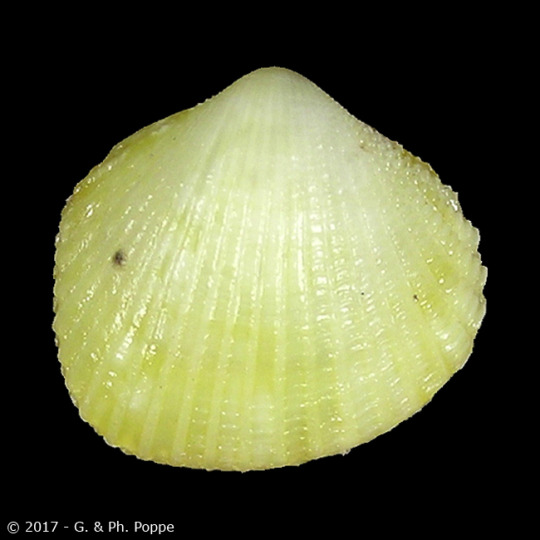
#tumblr genetics#genetics#asks#shells#conch#heart cockle#thank you anon for helping me learn that conchology is a fucking thing#such a beautiful world we live in
640 notes
·
View notes
Text
Cecil when he was human! lololol (he gonna be fish later)


He likes shells bc of his mom! :3
She would take him down to riverbanks and beaches to teach him about the ocean and shells
🌊
Well she used to.
(also if any of you nerds /lh wanna tell me about marine biology facts or shell facts it would be a great help!!)
#he also majored in marine biology and minored in conchology! so- shells!!#artists on tumblr#drawing#fanart#digital art#oc#pressure#roblox#fishy#pressure roblox#pressure oc#human design#marine biology#conchology
23 notes
·
View notes
Text

George Brettingham Sowerby I; George Brettingham Sowerby II, The conchological illustrations, 1841. University of Michigan, HathiTrust Digital Library
17 notes
·
View notes
Text

#IFTTT#Flickr#biota#animalia#mollusca#gastropoda#caenogastropoda#neogastropoda#muricoidea#muricidae#pagodulinae#trophon#murex#hypsogastropoda#seashell#shell#specimen#caracol#caracola#marine#marino#blackbackground#collection#malacology#conchology#malacologia#geversianus#seasnail#snail#gastropod
6 notes
·
View notes
Text
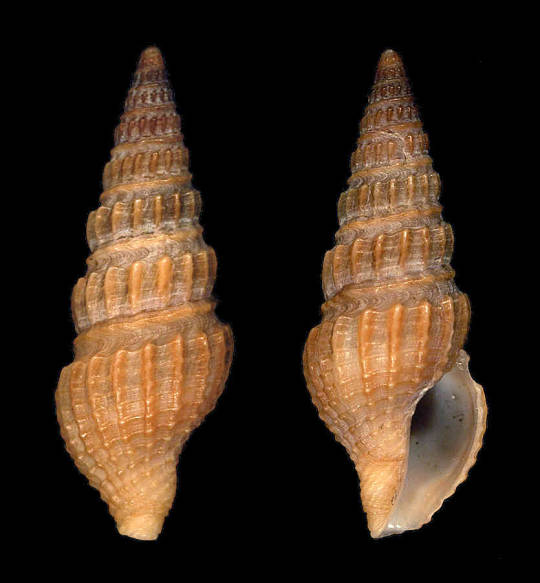
Family Pseudomelatomidae, Pyrgospira tampaensis (Bartsch & Rehder, 1939), Tampa Turrid, Bailey-Matthews National Shell Museum
50 notes
·
View notes
Text
The Ocean's Currency: Cowrie Shells in African Art | The Art Institute of Chicago
#animals in art#African art#article#link#Art Institute of Chicago#shell#shells#seashell#seashells#conchology#cowrie#cowrie shells
13 notes
·
View notes
Text
i just discovered the world of conchology and I am FASCINATED. i have no clue as to why this discovery, the discovery of a world of shell experts, is so shocking to me (there's and expert for everything!) yet here i am.
the website i discovered is the belgian owned conchology.be. they house several articles on shell information (including how to identify a false shell for sale! who knew these types of markets existed!!) and several biographies on famous conchologists and their discoveries!! highly recommend giving this site a visit.
1 note
·
View note
Photo

🐚 A conchological manual London: Henry G. Bohn, 1846.
697 notes
·
View notes
Text

Convergent evolution of Amphidromus-like colourful arboreal snails and phylogenetic relationship of East Asian camaenids, with description of a new Aegistohadra species
Parin Jirapatrasilp, Chih-Wei Huang, Chung-Chi Hwang, Chirasak Sutcharit and Chi-Tse Lee
ABSTRACT
East Asian terrestrial snails of the family Camaenidae are diverse in terms of genus and species numbers, shell morphology and mode of living. This family also includes colourful conical arboreal snails that traditionally have been assigned to the genus Amphidromus. Yet, the present study shows that, despite their deceiving conchological similarity, some of these East Asian arboreal snails do not belong to the genus Amphidromus or the subfamily Camaeninae. The presence of a dart complex comprising a mucous gland, a dart sac, an accessory sac and a proximal accessory sac, along with a pronounced penial caecum and molecular phylogenetic analyses revealed that former ‘Amphidromus’ dautzenbergi, ‘A.’ roemeri and ‘Camaena’ mirifica, and one additional new species belong to Aegistohadra (subfamily Bradybaeninae). Aegistohadra dautzenbergi, comb. nov. and Aegistohadra roemeri, comb. nov. are conical with colourful spiral bands, whereas Aegistohadra mirifica, comb. nov. and Aegistohadra zhangdanae, sp. nov. are heliciform to conical with colourful, variegated spiral and transverse banding patterns. DNA sequence analyses also revealed that each variety of Aegistohadra dautzenbergi could not be differentiated by mitochondrial (cytochrome c oxidase subunit I and 16S rRNA) gene fragments. The phylogenetic position of Aegistohadra within the East Asian camaenids revealed that the similar appearance in shell morphology, microhabitat use and diet to arboreal snails in the genus Amphidromus is homoplastic. Moreover, the presence or absence of a dart complex is also homoplastic and is unsuitable for suprageneric classification. By contrast, the presence of a flagellum and a penial caecum is useful for the suprageneric classification.
Read the paper here:
CSIRO PUBLISHING | Invertebrate Systematics
#tree snail#land snail#snail#gastropod#mollusk#amphidromus#camaenidae#animals#nature#asia#malacology
111 notes
·
View notes
Text

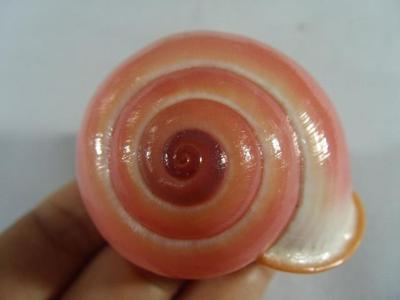
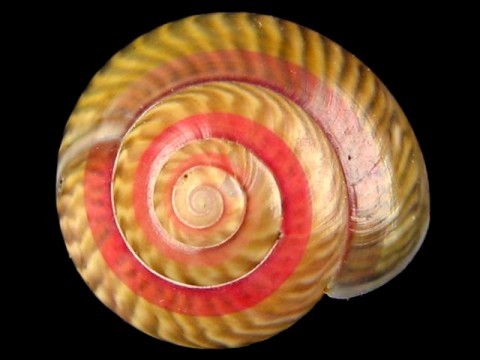
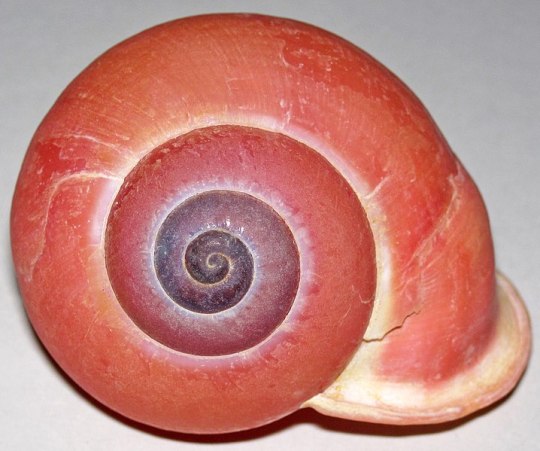


Designs and colours of shells are wonderous - a true mystery of nature.
Here the Woods Hole Oceanographic Institute explains the technology of shell-building. Yes, I understand everything, but it is still a wonder. Images are from various internet archives.
"Where do shells come from? The animals make them. Mollusks have an outermost layer of tissue on their bodies. Called the mantle, this layer connects the animal to its shell. The mantle also creates that shell.
Specialized cells in the mantle build the shell using proteins and minerals. These are secreted—released into the space outside the cells. There, the proteins create a framework that provides support for the growing shell. The proteins in the framework also determine which minerals are used in specific parts of the shell.
Calcium carbonate, the main mineral found in shells (including eggshells), binds to the protein. If you have ever seen construction workers build with concrete, this is similar. The protein is like the steel rebar that gives shape and support. Calcium carbonate is like the cement that fills in all the gaps.
Calcium carbonate can form two different types of crystals. One is called calcite. This incredibly common crystal can be found all over the world. Calcite makes up chalk, marble, coral, limestone—and seashells. The other form is aragonite. This crystal has a different arrangement of calcium carbonate. Both calcite and aragonite are found in seashells.
A mollusk’s shell has three layers. Each is made up of similar materials. But how those materials are arranged gives them each a different look and feel. The outermost layer is mostly protein. It’s often rough and may have bumps or spikes. Proteins in the middle layer cause calcium carbonate to form calcite crystals. These fill in the spaces, making the shell tough to break.
The innermost layer is the one in contact with the mantle. It’s a smooth, iridescent layer called nacre or mother-of-pearl. Nacre is made up of protein and calcium carbonate. But it looks and feels completely different from other parts of the shell. That’s because the mantle secretes different proteins for different layers. Different proteins cause calcium carbonate to crystallize in different ways. Those used in the middle layer create calcite. Those used in the innermost layer create aragonite.
As the animal grows, its shell must grow along with it. This happens along the outer edges. A snail adds to its shell around the opening, where it pokes its head out. For a clam or mussel, it’s the outer edges where the two shells separate. The result is growth rings, like those in a tree, that allow us to measure a mollusk’s age.
When the animal inside dies, its shell is gradually pounded against the rocks and sand. Over time, shells break down. They become part of the sand. White beaches have sand made almost entirely of tiny bits of shells."
32 notes
·
View notes
Text
Taxonomic Analysis of Gastropod Snail Occurrence in Agroecosystems

Abstract
Gastropods have a very important position in our ecosystem as pest, intermediate host, food source and as bioindicators for environmental quality but the taxonomic work regarding snail species has not been carried out in this part of the world after 19th century. Total 19290 snails were collected from agro ecosystem of Faisalabad for their taxonomic characterization. The identification of the specimens was made on the basis of number of whorls, coiling of the shell, umbilicus, shape, colour, shape of the aperture, presence or absence of operculum, height (mm), diameter (mm) and the diameter of the aperture (mm) using vernier caliper. Microscopic identification was done by using recent identification keys and diagrammatic description provided in them. We found snails belonging to 2 orders 7 families 9 genera and 15 species. This is a baseline study to get the basic information about the malacofaunna of Faisalabad which will be important in various applied fields. However, new sibling species might be proposed of Zooctecus insularis after molecular characterization.

Introduction
Land snails are generally considered as typical herbivores, fungivores and detrivores (Burch and Pearce, 1990) that show intraspecific competition at weak levels (Cain, 1983, Barker and May hill, 1999). Annual litter input of about 0.5% per year can be consumed by land snail communities (Mason, 1970). They are designated as serious pests of ripening fruits i.e. tomatoes and strawberries as they are grown near the ground. However, they also depend on foliage and fruit of some trees like citrus (Flint, 2003).
It has an important position in the food webs of different ecosystems as snails are mostly consumed by fish, water fowl, crayfish, leeches and sciomyzid flies (SWCSMH, 2006). Most of the studies on the land snails have been carried out approximately a century before in the Indian subcontinent. Hutton (1842) collected and studied the land snails of neighborhood of Bolan pass, from Suliman range and the hills of south laying west to Indus. According to the Blanford and Godwin (1908), in the areas of Saw at, Dir or Chitral no terrestrial snails have been observed except Petraeus snails, while in the Kuram valley only very few species were found. They worked chiefly on the conchological side of the families Testacellidae and Zonitidae of Indian subcontinent.
Pokryszko et al. (2009) collected 3500 dry shells and described 22 species out of which 12 were new species from 77 localities. The specimens were preserved in alcohol. The shell variations in most species were described and nine species were illustrated with Figs of detailed reproductive system. In the Northern area of Pakistan there is highest diversity of Pupilliods due to wetter climate and wider altitudinal range. Ten out of twenty two species were considered to be endemic to Pakistan, while the distribution of the rest of species was extended to other regions i.e. Asia, Europe and Holarctic.
Pupilloid fauna showed great diversity of Palaearctic/Holarctic influence on general. Recently researches have been conducted on the biodiversity of soil macro inverteberate in the low and high input fields of wheat and sugarcane in District Faisalabad (Rana, 2012; Siddiqui, 2005) with the major focus on impact of chemical on the diversity of different macroinverteberates. Rana (2000) studied the ecological distribution of earthworm species along some water bodies in the agro ecosystem of Faisalabad Division. Khanum (2010) studied the taxonomy of the plant nematodes of sugarcane fields.
Very less work has been done with reference to the taxonomy and ecology of snails in the agro ecosystem. Previously Ali (2005), Altaf (2006) and Rahman (2011) have attempted to study the diversity of snails in agro ecosystem of Faisalabad which has augmented the previous information of the malacofaunna in Faisalabad. The work of the Ali (2005) and Altaf, (2006) was just about the sugarcane fields and wheat fields near Gutti village area; however Rahman (2011) covered only few villages of Faisalabad focusing only one family of snails. The diversity index was found highly significant in agricultural fields however the results were non-significant in case of ditches. It can be concluded that due to environmental degradation and water pollution the snail diversity is non significant, in ditches however in the agro ecosystem it is a pest (Altaf et al. 2016).
This study is focuses mainly on the taxonomic account of the different species found in the agro ecosystem of Faisalabad, Pakistan.
Source : Taxonomic Analysis of Gastropod Snail Occurrence in Agroecosystems | InformativeBD
3 notes
·
View notes
Text

George Brettingham Sowerby I; George Brettingham Sowerby II, The conchological illustrations, 1841. University of Michigan, HathiTrust Digital Library
8 notes
·
View notes
Text
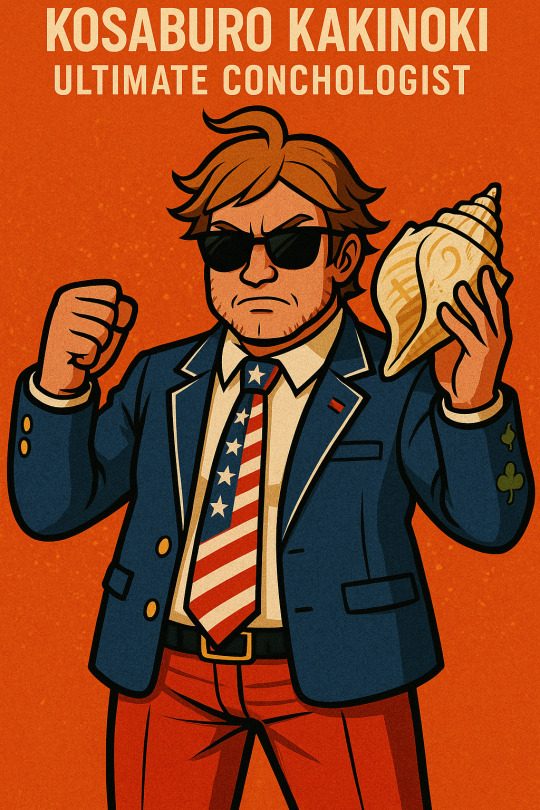
🐚 KOSABURO KAKINOKI ♂️
「Ultimate Conchologist」
Color Theme: Persimmon Orange
Personality: American-style – Confident, chill, eccentric about his niche, and full of beachy charisma
🌊 Character Introduction:
“Dude. You ever hold a shell to your ear and hear the universe? ‘Cause I have—and it was awesome.”
Say hello to Kosaburo Kakinoki, the Ultimate Conchologist—a wild-haired shell scientist with a laid-back surfer vibe and a heart as bright as his persimmon-orange board shorts. With a mesh tank top, coral accessories, and a backpack full of spiral specimens, Kosaburo treats conchology (the study of seashells) like both a science and a lifestyle. He’s a wave-chasing, specimen-hunting eccentric who knows everything about mollusk shells—from their spiral formations to their sonic reverberations.
Kosaburo's Americanized behavior makes him stick out like a buoy in a tea ceremony. He speaks fluent surfer slang, high-fives often, and treats life like one big sunny tidepool of discovery. But behind the breezy catchphrases is a surprisingly sharp analytical mind—a naturalist who treats every shell like an ancient puzzle from the sea.
🐚 Backstory:
Kosaburo was born in Kanagawa Prefecture, near the shores of Enoshima, but spent much of his childhood bouncing between Japan and coastal towns in California, due to his oceanographic father's research. Living half his life beachside in the U.S. gave him his relaxed, West Coast personality. He first got hooked on conchology when he found a rare Syrinx aruanus (the world’s largest snail shell) while snorkeling at age nine. That moment became his calling.
From then on, he traveled between aquariums, tidepools, and marine biology symposiums, collecting thousands of shell specimens. By 15, he was giving conchology lectures in both English and Japanese, collaborating with biologists and artists alike. Hope’s Peak Academy scouted him not just for his oceanic knowledge—but because he’s possibly the only person who made shell science look cool.
❤️ Likes:
Tidepool exploration
Spiral patterns and symmetry
Marine biology memes
Sunlight on wet sand
Shell polishing
Playing the conch like a horn
💢 Dislikes:
People who steal shells from habitats
Flat shoes (he lives in sandals)
Tight neckties
“Boring textbooks”
When people confuse coral with shells
Pollution near reefs
🈂️ Name Etymology:
Kosaburo (小三郎) — A classic boy’s name meaning “little third son,” grounding his otherwise loud personality in tradition.
Kakinoki (柿の木) — “Persimmon tree,” linking directly to his persimmon orange color scheme and evoking an earthy-natural flair, perfect for a nature-loving scientist.
0 notes
Text
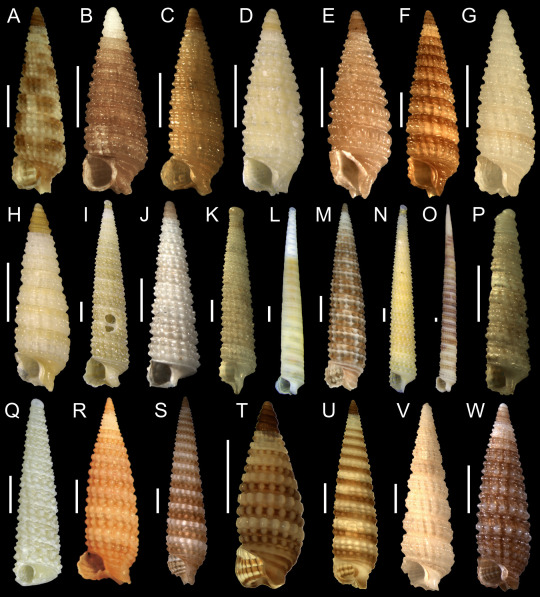
Fig. 24 in Unraveling one of the 'Big Five': update of the taxonomy of Triphoridae (Gastropoda, Triphoroidea) from Brazil, published as part of Fernandes, Maurício Romulo & Pimenta, Alexandre Dias, 2020, Unraveling one of the 'Big Five': update of the taxonomy of Triphoridae (Gastropoda, Triphoroidea) from Brazil, pp. 1-170 in European Journal of Taxonomy 665 on page 52, DOI: 10.5852/ejt.2020.665, http://zenodo.org/record/3899047
37 notes
·
View notes
Text
youtube
Introducing the Faculty of Conchology!
The work of novice researcher Innis'a Bvalvah is not over, and we are happy to announce that the Faculty of Conchology is open to visitors! This venue welcomes any and all to visit and observe the hard working researchers as they strive to study and preserve the molluscs of our star.
The Faculty features multiple exhibits, showing where and how the species live and thrive. As they make new discoveries, the exhibits may evolve.
Light DC - Alpha - Mist Ward 23, plot 42 Always open!
0 notes